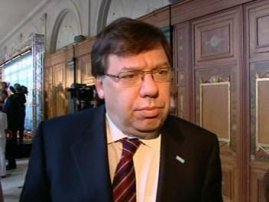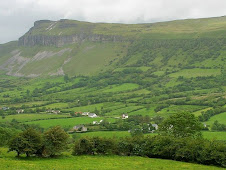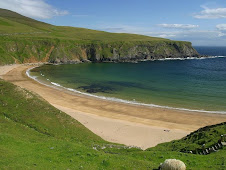As it undertakes a huge investment, the state-owned company says it will invest the money in renewable energy technologies, such as wind farms, biomass, ocean wave (as pictured below left), clean coal and other green power initiatives.
 Part of the investment will go to its overseas division as the ESB has committed to reduce its share of the Irish power generation market to 40%.
Part of the investment will go to its overseas division as the ESB has committed to reduce its share of the Irish power generation market to 40%.Chief executive Padraig McManus said that by 2020 the company will halve its carbon emissions as more clean energy is connected to the electricity grid and older power stations will be closed.
Of the € 22 billion investment, around half will be spent on renewable energy. € 4 billion are earmarked for onshore wind farms and other renewable technology, while around € 6.5 billion will be spent by the ESB connecting the output of other energy suppliers to the national grid.
As the ESB faces up to no longer being the dominant energy company in the Irish market, it also plans to expand overseas, with € 4 billion committed to its international division for projects in Britain and Europe.
To finance the investment the ESB will use its own cash and back it up with borrowings to about € 6 billion. ESB’s finance director Bernard Byrne said the international projects will be with joint venture partners to share the costs.
 According to Padraig McManus (right) the ESB will also invest money in so-called "smart meters" that are more efficient than the currently used meters, which are well out of date and obsolete.
According to Padraig McManus (right) the ESB will also invest money in so-called "smart meters" that are more efficient than the currently used meters, which are well out of date and obsolete.Sadly the CEO did not mention at all another area in which the ESB is probably in most need of improvement. That is the area of customer services and customer relations, in particular the matter of customers' access to the ESB in normal and easy ways.
Ever since the ESB sold off all their local shops, which had provided a strong and positive connection between the electricity company and her customers, the only possible way to get in touch with ESB is by telephone. Anyone who has tried that recently will know what a nightmare it is. The whole system works from remote call centres, staffed by badly trained young people on the minimum wage.
But before one even gets connected to them, one has to master a whole labyrinth of various electronic barriers and pre-recorded messages, many of them so generalised that they do not cover every possible reason a customer might have to contact the ESB.
I have spent meanwhile several hours waiting on electronic waiting loops without ever getting through to a real person. And when I did eventually, the person at the other end was not only completely clueless and unhelpful, but also not at all friendly. And when one then takes to writing a letter to the ESB, one never gets a proper reply.
If one gets a reply at all, it is never a personal reply that deals with the matter one has raised, but a photocopied standard print-out that annoys one even more. This cannot be by chance or accidentally and has to be a deliberate attempt of the ESB to cut itself off from their customers.
I have raised this matter already with my local TD, but even he only got a formalised litany of empty statements in reply, which did neither address the problem, nor offered any improvement.
This is not acceptable, and I urge Padraig McManus to invest a small part of his € 22 billion budget in more than overdue improvements of his utterly shambolic and ignorant customer service department.
The Emerald Islander







































1 comment:
didn't they have no choice but to sell the shops? weren't they making huge losses everywhere?
i've heard bad things about the phoneline though.
Post a Comment